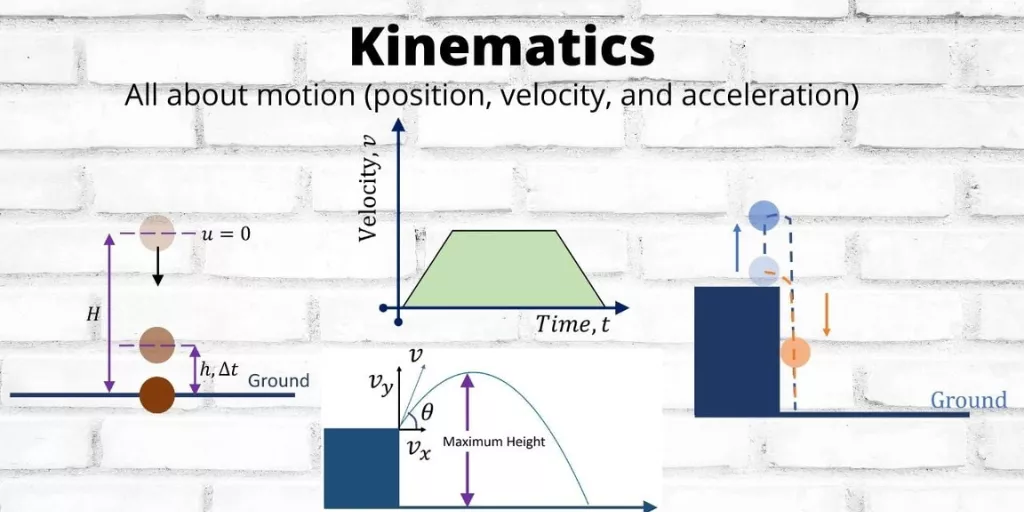Kinematics is a branch of classical mechanics that studies object motion without taking into account the forces or energy that generate it. It describes how objects move in terms of location, displacement, velocity, and acceleration across time.
In simple terms, kinematics answers questions like “How far?”, “How fast?”, and “In what direction?” rather than “Why?” the object moves.
Key Concepts in Kinematics
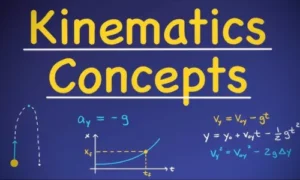
1. Position and Displacement
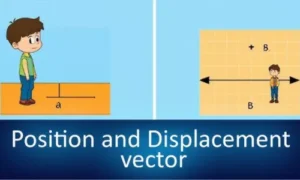
- An object’s position is its location at a specific moment, typically as measured from an origin or reference point.
- Displacement is defined as the shortest distance between an object’s starting and final positions, as well as its orientation.
Formula:
- Displacement (s)=xf−xi
2. Speed and Velocity
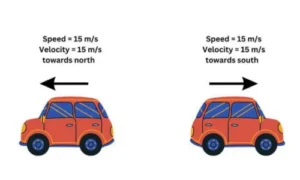
- Speed is a scalar variable that merely indicates how quickly an object moves.
- Velocity is a vector quantity, which indicates both the speed and direction of motion.
Average Velocity Formula:
- v = Displacement/Time
3. Acceleration
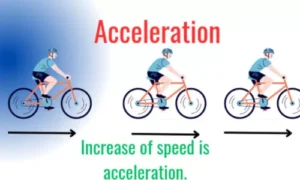
- Acceleration is a measure of the rate at which velocity changes over time.
- Acceleration becomes positive as velocity increases.
If it declines, acceleration is negative (also known as deceleration).
Formula:
- a= v−u/t
- where u = initial velocity, v = final velocity, and t = time taken.
4. Equations of Motion
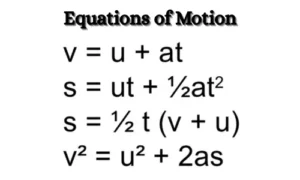
When an object moves with uniform acceleration, its motion can be represented by three standard equations:
v=u + at
s=ut + 1/2 at2
v2=u2 + 2as
These equations are commonly used to determine unknown variables when three of the four quantities (u, v, a, s, and t) are known.
Types of Kinematic Motion
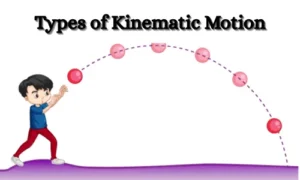
1. Linear motion
Motion along a straight path, such as an automobile driving down a straight road.
2. Circular motion
Motion along a curved path or circle, such as a satellite orbiting the Earth.
3. Projectile Motion
Motion of an object thrown into the air and moving under gravity, such as a ball being kicked.
Importance of Kinematics
Kinematics is the foundation of physics and engineering. It helps:
- Predict the future positions of moving bodies.
- Analyse the movement of vehicles, machines, and celestial bodies.
- Create robotics, animations, and athletic techniques.
Real-Life Applications of Kinematics
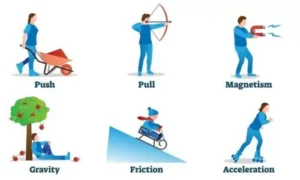
- Motion analysis is used in the automotive industry to design and develop safety systems.
- Kinematic modelling is used in animation and gaming to achieve smooth character movement.
- Astronomy: Studying the orbits of planets and satellites.
- Robotics: Managing robotic arms and movement pathways.
Conclusion
Kinematics is the first step toward understanding motion; it shows us how objects move before we investigate why they move (which is explored in dynamics). Whether you’re studying physics or simply curious about how objects move around you, learning kinematics provides a solid foundation in motion science.
Frequently Asked Questions (FAQs)
1. What are the 3 types of kinematics?
The three main types of kinematics are linear motion, circular motion, and projectile motion — each describing how an object moves in different paths.
2. What is the basic formula of kinematics?
The basic kinematic equations are:
v=u + at
s=ut + 1/2 at2
v2=u2 + 2as
3. What is an example of kinematics in real life?
A simple example is a car accelerating on a highway or a ball falling freely from a height. Both follow the principles of kinematics.
4. Why is kinematics important?
Kinematics is important because it provides the foundation for understanding motion in physics, engineering, robotics, and everyday activities.
5. Who discovered kinematics?
The study of kinematics began with Galileo Galilei, who first described the motion of falling objects mathematically, forming the basis of modern mechanics.


